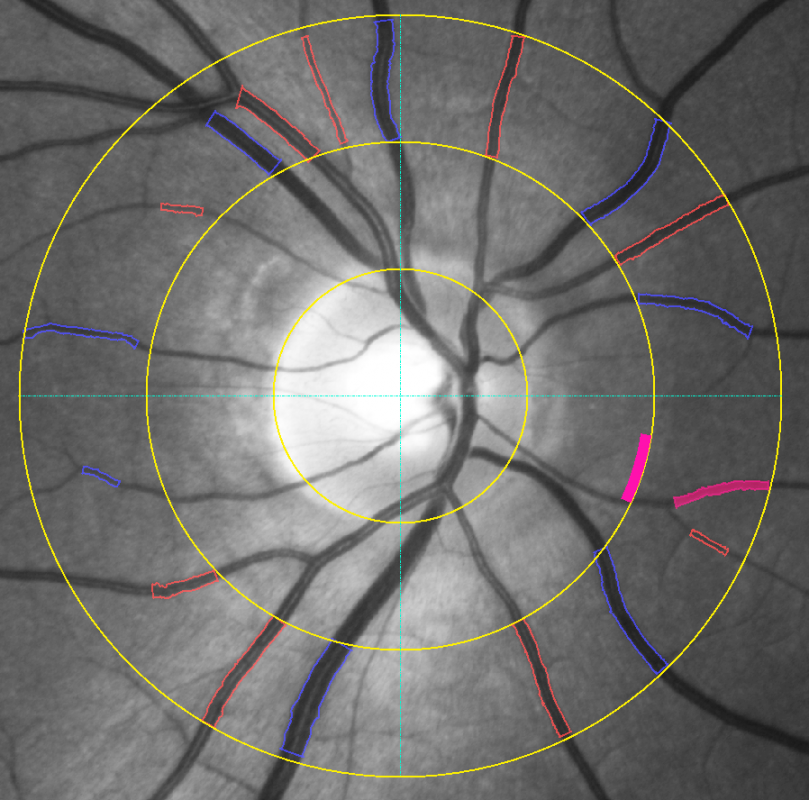Retinal Vessel Analysis and Obesity: static vessel analysis delivers innovative method to assess therapeutic success in obese patients
Almost a quarter of all adults in Germany suffers from pathological overweight (obesity) – with the number still rising. Patients affected are facing an increased risk of cardiovascular diseases or strokes. In addition, the German Obesity Society (DAG) states that obesity is a central risk factor for a severe progression of COVID-19. Accordingly, therapies that counteract obesity as well as protect the microvascular health of patients are important. Here, the method of static vessel analysis presents a new approach to determine the success of such treatments. The Jena-based manufacturer of medical devices, Imedos Systems GmbH, offers such innovative systems for static vessel analysis


When comparing the results of the static vessel analysis of patients during their course of treatment, there are usually significant improvements, for example after bariatric surgery, reducing their individual risk of developing cardiovascular diseases. In addition to the normalization of the Body Mass Index (BMI) and blood pressure, static vessel analysis therefore provides valid parameters for both regular monitoring of a patient’s microvascular health as well as the motivation of patients to undergo further treatment. If treatments are successful, there will still be good results four years after the completion of treatment as shown in a long-term study from 2019.
»When speaking of positive developments and improvements of the results of static vessel analysis, we mean improved microvascular health of the affected patient. We can reassure patients that their risk of cardiovascular events such as heart attacks or strokes, high blood pressure or metabolic impairments has decreased as a response to the measures taken,« explains Dr. Ing. Walthard Vilser, Managing Director of Imedos Systems GmbH. The examination itself is based on individual images of the retinal vessels. A non-invasive and contactless look into the patient’s eye enables the examiner to assess the diameters of the retinal arteries and veins and to determine all important static vessel parameters in a quick and precise manner.
Background: Obesity increases likelihood of severe progression of COVID-19
The U.S. Center for Disease Control showed that just over half of all patients with COVID-19 treated in intensive care units are obese. More importantly, an increased risk of acute or intensive care treatments (compared to patients of normal weight) also applies to younger COVID-19 patients, under the age of 60. Experts from the DAG and the European Obesity Society therefore point out that people with obesity should be particularly protected against an infection by the coronavirus.
Sources:
- Robert Koch Institut (2014): Übergewicht und Adipositas. Online verfügbar: www.rki.de/DE/Content/Gesundheitsmonitoring/Themen/Uebergewicht_Adipositas/Uebergewicht_Adipositas_node.html
- Deutsche Adipositas Gesellschaft (2020): DAG- Positionspapier. Adipositas und Covid-19. Empfehlungen für Menschen mit Adipositas und Forderungen an die Politik.
- Lammert et al. (2012): Improved Arteriole-to-Venule Ratio of Retinal Vessels Resulting From Bariatric Surgery. In: obesity; Vol. 20: 2262–2267.
- Streese et al. (2019): Short- and Long-Term Effects of Bariatric Surgery on Vascular Phenotype. In: Obesity Surgery.




